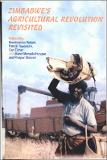| dc.contributor.author | Rusike, Joseph | |
| dc.contributor.author | Sukume, Chrispen | |
| dc.coverage.spatial | Zimbabwe. | en |
| dc.date.accessioned | 2016-03-16T10:40:48Z | |
| dc.date.available | 2016-03-16T10:40:48Z | |
| dc.date.issued | 2006 | |
| dc.identifier.citation | Rusike, J. and Sukume, C. (2006) Agricultural input supply. In: Rukuni, M., Tawonezvi, P. and Eicher, C. (eds.) Zimbabwe's agricultural revolution revisited. Harare: UZ Publications, pp. 279-296. | en |
| dc.identifier.isbn | 0869241419 | |
| dc.identifier.uri | https://opendocs.ids.ac.uk/opendocs/handle/20.500.12413/10090 | |
| dc.description | A research paper on agricultural input supply for small-holder farmers in the rural areas of Zimbabwe. | en |
| dc.description.abstract | The preconditions for the development and growth of agricultural input supply systems for smallholders were established in the 1940s and 1950s, mainly as spin-offs from public and private investments targeted at large-scale commercial farmers. These included government agricultural research stations that released new cultivars, nutrients, pesticides and farm equipment technologies that private sector firms could sell to farmers at a profit. They also included public extension services that cooperated with private firms, farm credit, market channels and favourable government policies. Agribusiness firms entered the input markets by initially focusing on large-scale commercial farmers and later expanding to smallholders in favourable areas.
This chapter discusses the historical development of the fertilizer and chemical industries from the pre-independence and post-independence eras to the introduction of structural adjustment reforms in 1991, changes during the economic reforms in the 1990s, and finally changes and challenges emanating with the land and agrarian reforms since 2000. After 70 years of servicing mainly large-scale commercial farmers, the fertilizer and chemical industry is now being challenged to re-invent itself and supply relevant farm management information, knowledge, technology, capital and services to an increased number of black commercial and smallholder fanners, scattered in all parts of the country. The smallholder fertilizer problem is complex and has been debated for decades. | en |
| dc.language.iso | en | en |
| dc.publisher | University of Zimbabwe (UZ) Publications | en |
| dc.rights.uri | http://creativecommons.org/licenses/by-nc-nd/3.0/ | en |
| dc.subject | Agriculture | en |
| dc.subject | Rural Development | en |
| dc.title | Agricultural input supply | en |
| dc.type | Book chapter | en |
| dc.rights.holder | University of Zimbabwe (UZ) | en |


